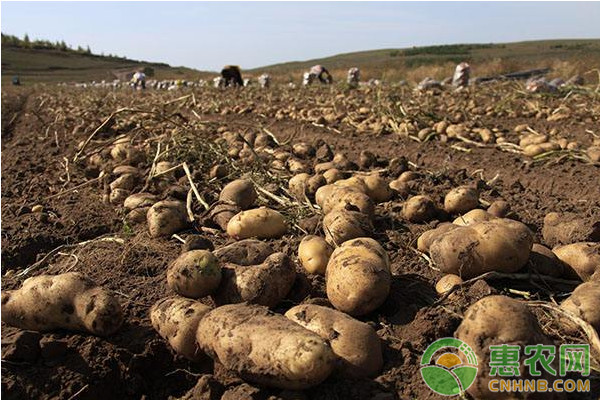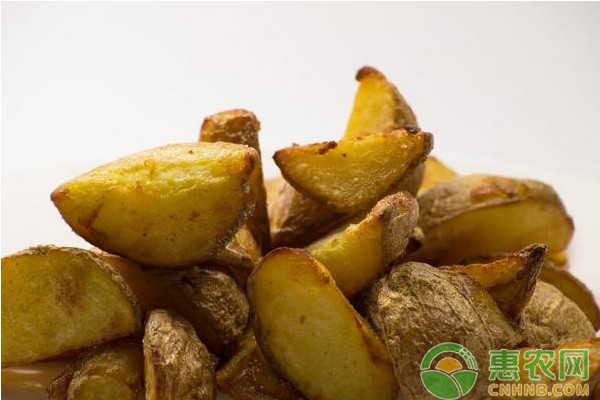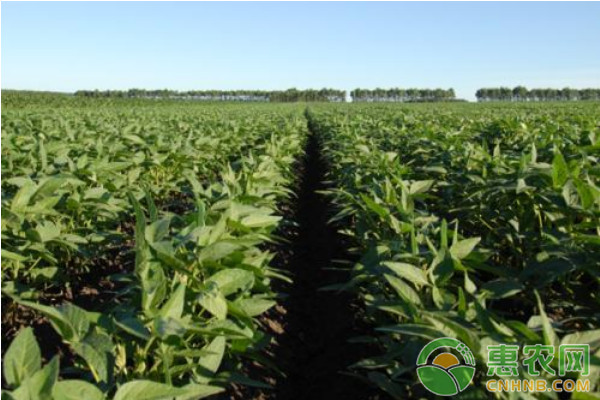At present, in planting production, the main factors affecting potato yield are the management factors such as planting techniques and pest control, in addition to variety degradation. Some experts analyze and discuss this and make feasible suggestions.

1 variety selection
Seed selection is an important part of high yield of potatoes, and the selection of excellent virus-free potato varieties is the basis of high-yield cultivation. Appropriate varieties should be early maturity, high yield, stable yield, comprehensive disease resistance, good quality, suitable for open field planting and protected cultivation, concentrated potato, large potato tubing, high yield and good commodity.
2 Site preparation
Deep ploughing can loosen the soil layer, increase the permeability of the soil, prevent soil compaction, improve water permeability, promote root respiration and nutrient absorption. The requirement for deep tillage is usually within 30 cm and at least 25 cm. Before winter farming, it is combined with fertilization to increase soil fertility. The potato is ridged, which can raise the ground temperature, has the effect of heat preservation, and has strong permeability of the soil, good drainage performance, and the growth conditions of the roots are satisfied.
3 cut germination
Seed potato diced planting can promote oxygen exchange inside and outside the tuber, break dormancy, early germination and emergence. However, when cutting, it is easy to pass the knife to pass the disease, causing rotten seeds, lack of seedlings or increasing the incidence rate in the field, and speeding up the variety degradation. The cut is generally preferably cut into 20-30 grams. Cut the cuts so that each cut has the apex of the top. When cutting the pieces, the diseased potatoes should be removed, and the cut pieces should be strictly disinfected to prevent the disease.
Germination is an important measure to prevent disease and high yield in potato cultivation. Promote germination before sowing, can promote early maturity and increase yield. At the same time, in the process of germination, the diseased potato can be eliminated, and the rate of diseased plants in the field after planting or the lack of seedlings and strips can be reduced, which is beneficial to the whole seedlings.
4 Fertilization
4.1 Fertilization principles
Potato is a high-yield crop, so it has high requirements for fertilizer. If there is not enough nutritious potato, it can't get high yield. According to the fertilizer characteristics of potato, the base fertilizer is the top dressing, the organic fertilizer is the main, and the inorganic fertilizer is the supplement. Change the practice of applying only nitrogen fertilizer in the past to achieve formula fertilization.
4.2 Fertilization techniques
The soil fertility standard for high-yield potato fields is 1~2% of organic matter, 0.4% of total nitrogen, about 50 mg/kg of hydrolyzed nitrogen, about 0.1% of total phosphorus, more than 20 mg/kg of available phosphorus, more than 2% of total potassium, and quick-acting potassium. 120 mg / kg or more. In view of the fact that most of the potatoes are grown on poor soils, in order to increase the yield of potatoes, it is necessary to add non-polluting organic fertilizers in combination with nitrogen, phosphorus and potassium fertilizers. Under normal circumstances, the land of 2000~2500 kg of fresh potato per mu, the base fertilizer should be applied with organic fertilizer 2000~3000 kg, 50 kg of superphosphate, 20 kg of potassium sulfate, when the soil contains less than 40 mg/kg of hydrolyzed nitrogen. Increase 10 kg of urea per acre, and apply 10 to 13 kg of urea per acre in the early growth period.

5 Irrigation and drainage
The growth demand of potato is relatively high. The average potato volume of 3000 kg per mu is 500 ml. The data is converted into volume, which is about 400 cubic meters of water. It can be seen that the water demand is large. Pay attention to the mid-term drainage and irrigation in the early and late stages.
6 sowing
6.1 Sowing date
In the spring, the sowing of potatoes can be sown when the ground temperature is above 15 degrees Celsius. If the planting is too early, the low temperature will not meet the requirements, and the seedlings will be affected by the freezing damage. Summer potato growth is shorter than spring potato, but it also needs early cutting, too late to reduce production.
6.2 Reasonable close planting
When planting mid-maturing varieties on land with good fertility conditions, the planting density of 0.067hm2 should reach 3800~4000 plants. When planting in 60 wide ridges, two rows of one ridge. When planting in a narrow ridge of 35 wide, one row of ridges and one row, the density of seedlings of mid-late maturing varieties planted in dry land with poor fertility can be appropriately reduced; For plots with irrigation conditions, planting density may be appropriately increased when planting early maturing varieties.
6.3 Planting methods
The method of planting should be selected according to the length of the seedlings. The long seedlings use the bottom of the planting method, and the short seedlings need to use the oblique planting method, which is usually about 5 cm. In view of the current sputum of potato stem nematode disease, it can be mixed with soil by using 10% Tiannuo net WP 2~3 kg.
7 Field management
7.1 Previous period
1 cultivating weeding: cultivating should be carried out after the seedlings return to green, usually two or three times, especially after the rain, the cultivating can make the soil not squashed. When cultivating, it should be noted that the ridges should not be cultivated, because the stems and leaves will be damaged and the yield will be reduced. At this time, weeding can be carried out. 2 top dressing: topdressing generally uses quick-acting nitrogen, combined with phosphate fertilizer and potassium fertilizer, and the seedlings should be applied more to promote growth. 3 timely watering: the soil moisture in the early stage of potato growth is 70% of the field water holding capacity. When the water holding capacity is below 60%, it needs to be watered, but it must be poured slowly. The water quantity is not over-represented.
7.2 middle and late
1 Drainage and flood control: Control soil moisture. When the humidity exceeds 80% of the field water holding capacity, it will affect its growth. Therefore, when it is rainy, it should be properly drained. 2 vines do not turn over the vines, protect the stems and leaves: the reason is to raise the vines instead of turning the vines, because the vines do not cause damage to the stems, the potato buds are less buds, so that the nutrients will not be diverted, so that To protect the output. 3 Top dressing: When the color of the leaves in the late growth period is faster, the root dressing should be carried out, and the spray should be sprayed with 0.4% potassium dihydrogen phosphate or 2% potassium sulfate solution per acre, 7~10 days, even spray 3 Times.

8 pest control
8.1 Diseases
(1) Late blight: Late blight is the main disease of potato, sprayed with 25% Amishida 500~800 times solution; Klulu, R. sonicum 1.5kg/hm2 with water 3000 times spray, spray every 7~10 days Once, even spray 5~6 times. (2) Viral disease: Potato virus disease mainly includes common mosaic disease, yellow mosaic disease, leaf curl disease, purple top and wrinkled mosaic leaves. The prevention and control of potato virus disease is mainly based on prevention, such as the selection of qualified virus-free seed potatoes and disease-resistant varieties, improvement of cultivation measures, cutting off the source of infection, and controlling aphids. (3) Ring rot: use disease-resistant varieties and establish disease-free seed fields, knife disinfection and pesticide soaking. When cutting the seeds, the cutter is disinfected with potassium permanganate concentration of 5ppm. Before planting, the seed potato is treated with 75% dikesone wettable powder, 0.28 kg per 100 kg of seed potato powder, and the appropriate amount of dry soil is mixed and seeded. Remove the diseased plant.
8.2 Pests
There are mainly golden worms, mites, and ladybugs. Use phoxim particles 60~70kg, 10% imidacloprid 0.02kg per mu or 3% acetamiprid 0.015kg spray, 50% dichlorvos emulsion diluted 1000 times liquid spray to prevent
9 harvest
Taking the ground temperature as the standard of harvest, when the temperature is stable at 15 degrees Celsius, the tubers will not grow. Therefore, this time is the best time, but it should be noted that it should be advanced at 18 degrees Celsius, at 12 degrees Celsius. Complete the harvest before. When harvesting, be light, try not to increase the number of transshipments, and prevent skin breakage.
The above is the full content of high-yield potato cultivation and pest control. Farmers and friends can come to Huinong.com to study hard.
Shandong Chunyu Water-saving Irrigation Equipment Co., Ltd., founded in 2011, is located in Laiwu High-tech Zone, Jinan City. It is a high-tech enterprise focusing on innovative and efficient emitter mold manufacturing and emitter product research and development and production. After nearly ten years of innovation and development, it is the invisible champion enterprise in Shandong Province, and now it is in a leading position in this field in China.
Spring rain people-oriented, build talent highland. At present, the company has 16 high, fine and advanced technical personnel, and cooperates with a number of scientific research institutes, forming a mold design, emitter testing, flow testing and other professional technical personnel team. In recent years, it has obtained 3 invention patents, 33 utility model patents and 3 patent awards. In 2019, it was identified as an intellectual property advantage enterprise in Jinan. It has undertaken 4 provincial science and technology innovation projects and won 2 second prizes of Shandong Science and Technology Progress Award. The company has built Jinan drip emitter mold engineering technology research center, the company has a slow wire cutting, CNC machining center, precision EDM machine, 3D projection measuring instrument, CNC engraving, laser engraving and other advanced processing equipment. Mature technology and rich experience support the excellent quality of Chunyu. Spring Rain pays attention to every link of production, implements 8S management, strictly controls the quality of products at the beginning, the middle and the end, and forms the seamless link of production management. The company has independently researched and developed flat emitter molds with full hot runner, cylindrical emitter molds with full hot runner and other products. With excellent quality, competitive price and good after-sales service, the company is well known at home and abroad, and has been sold well in Egypt, India, Iran, Turkey, Saudi Arabia, the United States and other countries.
With the vision of "building a global professional emitter mold supplier" and the mission of "providing solutions for efficient and innovative production of global water-saving irrigation enterprises", the company takes "scientific and technological innovation to scale new heights; Keep improving, the pursuit of excellence; Honesty and trustworthiness, win-win cooperation "for the values of the enterprise. For the construction of water - saving and resource-saving society to make a positive contribution.
Inline Flat Drippers,Hydrodrip Flat Drippers,Irrigation Agriculture Flat Dripper,Inline Flat Dripper For Greenhouse
Shandong Spring Rain Water Saving Irrigation Equipment Co.,Ltd. , https://www.drippermould.com